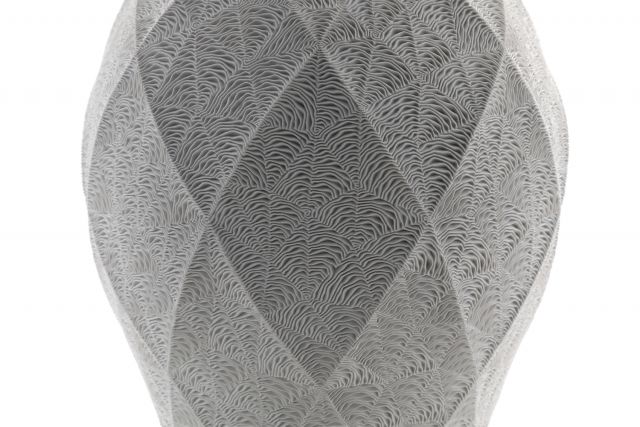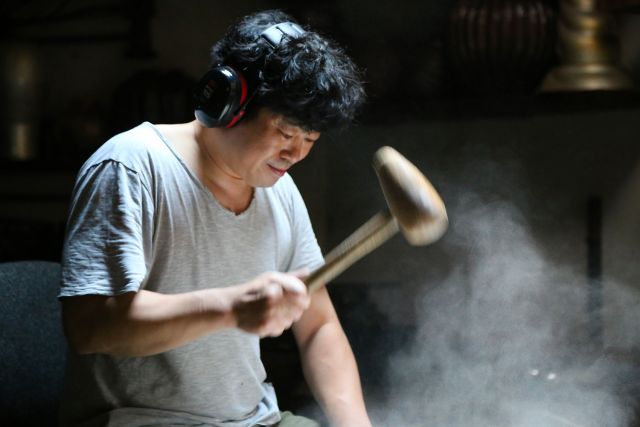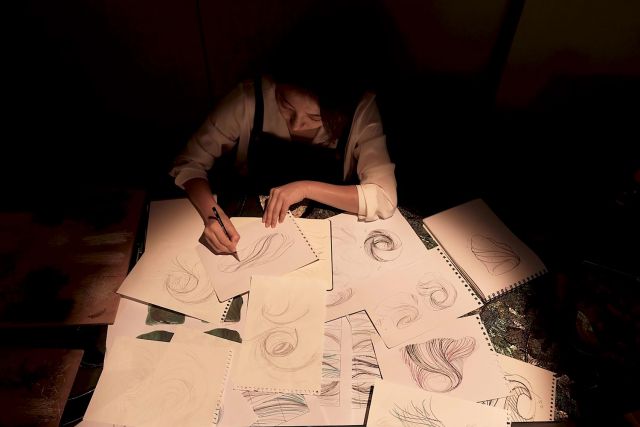This traditional Korean dress is called Chima Jeogori. Jeogori is a type of Korean top featuring narrow sleeves. In this case, it is made of silk in three colours: blue, yellow and purple. It is complemented by a voluminous jade skirt made of multiple layers of silk. Chima Jeogori is a form of Hanbok, which is a wide term used for traditional Korean clothing.
Length 155 cm
Width 45 cm
Height 155 cm
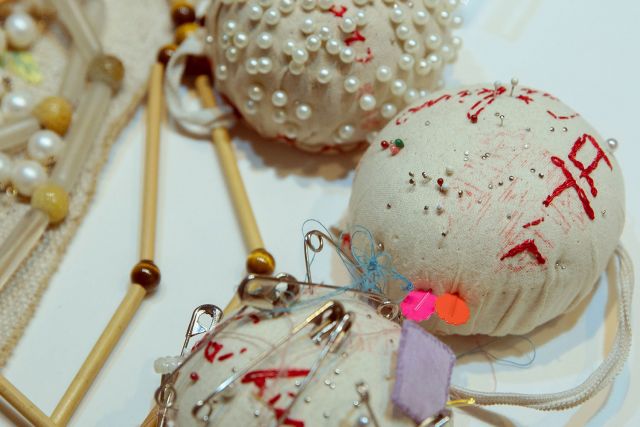
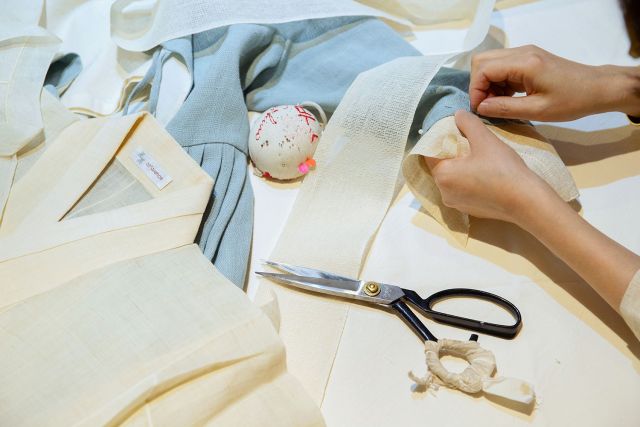
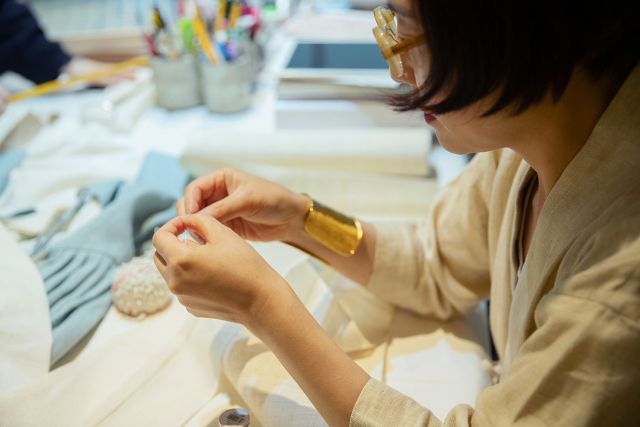
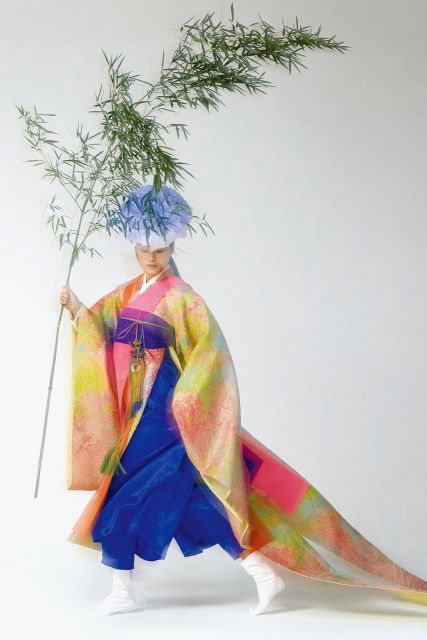
Youngjin Kim
- Traditional dressmaker
- Seoul, South Korea
- Rising Star
Monday to Friday 10:00 - 19:00
+82 23336692
Dreamy dressmaker
- • Youngjin used to be an actress
- • Her inspiration for ideas is in daily life
- • She has turned hanbok making from hobby into her life
Youngjin Kim loved theatre from an early age which led her to become an actress. She also worked as a supervisor for Louis Vuitton in Korea for over ten years, but due to health problems had to stop work. During a bout of depression, she became fascinated with making hanbok – traditional Korean clothes. She became a disciple of Gwang-Hoon Park, an intangible cultural asset of Seoul, and soon she began making hanbok herself. The difference between her traditional custom hanbok brand "Tchai Kim" is in creating and boldly blending traditional Korean fabrics with imported ones. The name "Tchai" – meaning difference – implies that she acknowledges each one's differences and wishes for a mutually beneficial life. She also designs traditional costumes for operas, plays, movies and TV dramas.
Read the full interviewWorks
Photo: © Youngjin Kim

Photo: © Youngjin Kim
Traditional Korean attire (Hanbok) worn during the Joseon dynasty (1392–1897). It is composed of a multi-coloured Jeogori top with long sleeves and a yellow girdle dress. The entire garment is made of silk.
Length 155 cm
Width 45 cm
Height 155 cm

Photo: © Youngjin Kim
This traditional Korean dress is called Chima Jeogori. Jeogori is a type of Korean top featuring narrow sleeves. In this case, it is made of pink and blue silk. It is complemented by a voluminous skirt made of multiple layers of silk. The entire garment is made of Indian tarp silk.
Length 155 cm
Width 45 cm
Height 155 cm

Photo: © Youngjin Kim
This traditional Korean dress is called Hwarot. It is considered the most sumptuous bridal clothing in Korea. It was traditionally only for noble women during the Goryeo (918–1392) and Joseon dynasties (1392–1897) but it is now generally worn in the contemporary wedding ceremony. This impressive dress is made of multiple layers of red silk and gold embroideries.
Length 155 cm
Width 45 cm
Height 155 cm

Photo: © Youngjin Kim
While Kim was studying handbok needlework, she came across a type of traditional military uniform worn by men during the Joseon dynasty (1392–1897) called Cheolik. She recreated it as a dress with a V-shaped collar, tailored for women. This particular one is complemented with a Daeryebok (court-costume) two-layers of skirt and a Doturak Daenggi – a long ribbon used to decorate braided hair.
Length 155 cm
Width 45 cm
Height 155 cm





